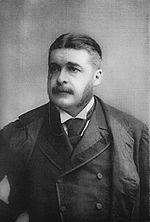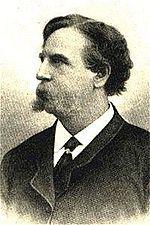Planning worship?
Check out our sister site, ZeteoSearch.org,
for 20+ additional resources related to your search.
- |
User Links
Search Results
The Glory of the Spring
Author: Thomas H. Gill Meter: 8.6.8.6 D Appears in 76 hymnals First Line: The glory of the spring how sweet Topics: God the Father God's Power in Nature Used With Tune: NOEL
The Glory of the Spring
The Glory of the Spring How Sweet
Author: Thomas H. Gill Hymnal: Vesper Chimes #288 (1930) First Line: The glory of the spring how sweet! Languages: English Tune Title: [The glory of the spring how sweet!]
The Glory of the Spring How Sweet
The glory of the spring how sweet!
Author: Thomas H. Gill Hymnal: The Methodist Sunday School Hymnal #264 (1911) Languages: English Tune Title: [The glory of the spring how sweet!]
The glory of the spring how sweet!
The Glory of the Spring How Sweet!
Author: Thomas H. Gill Hymnal: The Cyber Hymnal #1861 Meter: 8.6.8.6 First Line: The glory of the spring how sweet Lyrics: 1. The glory of the spring how sweet!
The new-born life how glad!
What joy the happy earth to greet
In new, bright raiment clad!
2. Divine Redeemer, Thee I bless;
I greet Thy going forth;
I love Thee in the loveliness
Of Thy renewèd earth.
3. But O these wonders of Thy grace,
These nobler works of Thine,
These marvels sweeter far to trace,
These new births more divine:
4. This new-born glow of faith so strong,
This bloom of love so fair,
This new-born ecstasy of song,
And fragrancy of prayer!
5. Creator Spirit, work in me
These wonders sweet of Thine;
Divine Redeemer, graciously
Renew this heart of mine.
6. Still let new life and strength upspring,
Still let new joy be given;
And grant the glad new song to ring
Through the new earth and Heaven. Languages: English Tune Title: ST. SAVIOUR (BAKER)
The Glory of the Spring How Sweet!
Arthur Sullivan

1842 - 1900 Person Name: Arthur S. Sullivan Arranger of "NOEL" in The Church Hymnal Arthur Seymour Sullivan (b Lambeth, London. England. 1842; d. Westminster, London, 1900) was born of an Italian mother and an Irish father who was an army bandmaster and a professor of music. Sullivan entered the Chapel Royal as a chorister in 1854. He was elected as the first Mendelssohn scholar in 1856, when he began his studies at the Royal Academy of Music in London. He also studied at the Leipzig Conservatory (1858-1861) and in 1866 was appointed professor of composition at the Royal Academy of Music. Early in his career Sullivan composed oratorios and music for some Shakespeare plays. However, he is best known for writing the music for lyrics by William S. Gilbert, which produced popular operettas such as H.M.S. Pinafore (1878), The Pirates of Penzance (1879), The Mikado (1884), and Yeomen of the Guard (1888). These operettas satirized the court and everyday life in Victorian times. Although he composed some anthems, in the area of church music Sullivan is best remembered for his hymn tunes, written between 1867 and 1874 and published in The Hymnary (1872) and Church Hymns (1874), both of which he edited. He contributed hymns to A Hymnal Chiefly from The Book of Praise (1867) and to the Presbyterian collection Psalms and Hymns for Divine Worship (1867). A complete collection of his hymns and arrangements was published posthumously as Hymn Tunes by Arthur Sullivan (1902). Sullivan steadfastly refused to grant permission to those who wished to make hymn tunes from the popular melodies in his operettas.
Bert Polman
Arthur Sullivan
Alexander Robert Reinagle
1799 - 1877 Person Name: A. R. Reinagle Composer of "ST. PETER" in Heart and Voice Alexander Robert Reinagle United Kingdom 1799-1877. Born at Brighton, Sussex, England, gf Austrian descent, he came from a family of musicians, studying music with his father (a cellist), then with Raynor Taylor in Edinburgh, Scotland. Reinagle became a well-known organ teacher. He became organist at St Peter’s Church, Oxford (1823-1853). He was also a theatre musician. He wrote Teaching manuals for stringed instruments as well. He also compiled books of hymn tunes, one in 1830: “Psalm tunes for the voice and the pianoforte”, the other in 1840: “A collection of Psalm and hymn tunes”. He also composed waltzes. In 1846 he married Caroline Orger, a pianist, composer, and writer in her own right. No information found regarding children. In the 1860s he was active in Oxford music-making and worked with organist, John Stainer, then organist at Magdalen College. Reinagle also composed a piano sonata and some church music. At retirement he moved to Kidlington, Oxfordshire, England. He died at Kidlington.
John Perry
Alexander Robert Reinagle
Richard Storrs Willis

1819 - 1900 Person Name: R. Storrs Willis Composer of "CAROL" in The Evangelical Hymnal Richard Storrs Willis (February 10, 1819 – May 10, 1900) was an American composer, notably of hymn music. One of his hymns is "It Came Upon the Midnight Clear" (1850), with lyrics by Edmund Sears. He was also a music critic and journal editor.
Willis, whose siblings included Nathaniel Parker Willis and Fanny Fern, was born on February 10, 1819, in Boston, Massachusetts. He attended Chauncey Hall, the Boston Latin School, and Yale College where he was a member of Skull and Bones in 1841.
Willis then went to Germany, where he studied six years under Xavier Schnyder and Moritz Hauptmann. While there, he became a personal friend of Felix Mendelssohn. After returning to America, Willis served as music critic for the New York Tribune, The Albion, and The Musical Times, for which he served as editor for a time. He joined the New-York American-Music Association, an organization which promoted the work native of naturalized American composers. He reviewed the organization's first concert for their second season, held December 30, 1856, in the Musical World, as a "creditable affair, all things considered".
Willis began his own journal, Once a Month: A Paper of Society, Belles-Lettres and Art, and published its first issue in January 1862.
Willis died on May 7, 1900. His interment was located at Woodlawn Cemetery.
His works and music compilations include:
Church Chorals and Choir Studies (1850)
Our Church Music (1856)
Waif of Song (1876)
Pen and Lute (1883)
--en.wikipedia.org
Richard Storrs Willis


 My Starred Hymns
My Starred Hymns

